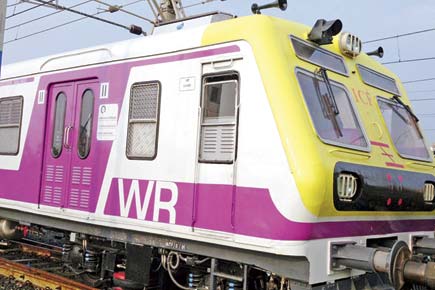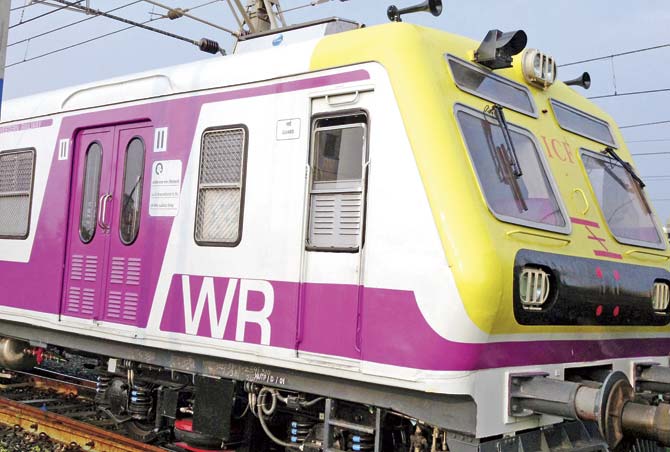After getting the final approval from Indian Railways, the new Bombardier rakes will run on the slow line from Churchgate station at 11.30 am

The new Bombardier rakes will finally run on Western Railway (WR) tracks from today, after Indian Railways approved the new prototypes on Monday. However, the approval also brought out an old issue.
ADVERTISEMENT

The new rakes will initially run on the slow line for three months. File pic
One of the recommendations (see box) made by the Commissioner of Railway Safety (CRS) is the need for a co-motorman in the new trains, something that motormen have been demanding since 2012.
CRS’ letter to the railways stated that a co-motorman should be present in the driving cabin to inform the motorman about signals, while he manoeuvres the train. The letter said signals between Churchgate and Dahanu Road are, on an average, 400 metres apart.
An additional motorman is also required for safety purpose, especially during peak hours when a train carries close to 6,000 commuters. Sources said that as a new prototype is being introduced, the commissioner has stressed on safety.
Meanwhile, the motormen claim that they have been asking the railways for the last two years to provide them with additional manpower. “We hope this recommendation will help rail authorities understand the gravity of the situation,” said a motorman.
They claim that usually it becomes extremely difficult for them to manage several aspects — checking for signal, looking out for trespassers on tracks, overshooting platforms, etc on their own. Even in long-distance trains, an additional driver is appointed mainly to oversee these issues, especially at night.
The first prototype will start running at 11.30 am from Churchgate. “We have decided to run the Bombardier rakes from tomorrow (Wednesday),” said Sharat Chandrayan, chief PRO, WR. Authorities are planning to run these two trains on the slow line for the first three months.
They will run at 70 kmph on the slow lines between Churchgate and Borivli, at 80 kmph on the fast lines on the same stretch, and on the Borivli-Virar-Dahanu patch at speeds up to 105 kmph.
 Subscribe today by clicking the link and stay updated with the latest news!" Click here!
Subscribe today by clicking the link and stay updated with the latest news!" Click here!






